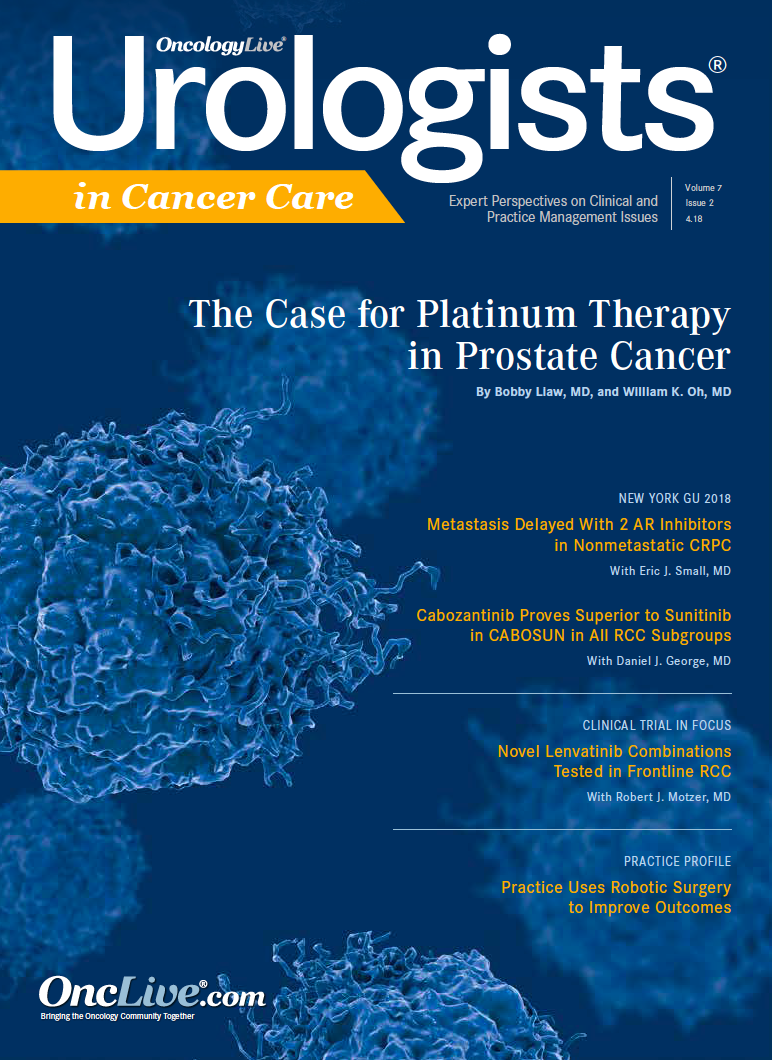Publication
Article
Urology Practice Uses Robotic Surgery to Improve Outcomes
Author(s):
Since 2005, physician partners at Comprehensive Urologic Care have been using a form of clampless surgery, which they developed at their practice, for partial nephrectomies.
Richard Troy, MD
Since 2005, physician partners at Comprehensive Urologic Care (CUC) have been using a form of clampless surgery, which they developed at their practice, for partial nephrectomies. The robotic procedure reduces ischemia and represents a form of innovation that the partners say they strive for in their steadily growing practice in the northwestern Chicago, Illinois, suburbs.
“We have quite an extensive experience using robotic surgery, not only for treating malignant disease of the urinary system, but also some benign conditions,” said Richard Troy, MD, director of advanced prostate cancer and men’s health clinics at CUC. The partners have performed close to 2500 robotic procedures, he said.
Referred to as clampless zero-ischemia robotic partial nephrectomy, the novel technique for treating kidney cancer relies in part on radio-frequency ablation.
The advantage of this method is that it’s an effective way to remove kidney tumors without having to clamp the artery, so the kidneys remain perfused during the entire procedure. One of the problems of partial nephrectomy is that when the artery is clamped the surgeon has a limited amount of time before tissue damage occurs, according to David E. Goldrath, MD, MBA, president of CUC. Lack of perfusion causes ischemia, so there is little time to complete the resection and get the tumor samples evaluated by the pathology lab.
History and Structure of the Practice
With the clampless method, the surgeons at CUC can keep the kidney perfused and send the tumor to pathology to make sure the margins are negative. The kidney can then be meticulously repaired without time constraints. “You don’t have to worry about ischemia time and loss of kidney tissue during the procedure,” Goldrath said.CUC has 3 locations: the main office in Lake Barrington, another office in Elgin, and a third in Crystal Lake. Founded by Laurence Gott, MD, in 1978, the practice has grown without any mergers to a team of 53 support staff, and 7 physician partners. An eighth physician will join the team this summer.
The partners take pride in their expanding team of subspecialists who hail from programs across the country. “Every 4 or 5 years, we’ve added a new doctor. We’re always looking for new blood and new ideas,” Goldrath said, adding that the practice benefits from the diversity of perspectives.
CUC’s unique compensation system enables the physician partners to specialize, which Troy and Goldrath say increases productivity. Instead of managing patient caseloads, physicians are assigned tasks such as nephrectomies, diagnostics, and laparoscopic procedures and paid accordingly. Every procedure has an associated “economic unit,” similar to a relative value unit, to keep the team focused on productivity.
“We feel that whether we are reimbursed or not, this system is beneficial for the practice,” Goldrath said. “It’s a pretty fair way to go so that people can subspecialize, and if somebody’s better at something in the practice, we can refer a patient to them, which is better for the patient and better for the practice.”
One-Stop Urology Shop
The physician partners meet weekly to discuss strategy and things that are going on in the practice. “By doing this, we have to answer to ourselves, and we have to come through with ideas,” Goldrath said. “Some practices that don’t meet regularly tend to grow stagnant and fail to make changes effectively or solve problems efficiently.”Troy and Goldrath like to think of the practice as a one-stop shop where patients can meet with physicians, have diagnostic procedures performed, and get the results all in 1 visit. Patients whose disease may have a genetic component, such as prostate cancer, are referred to genetic counselors. They also may be referred for DNA testing based on recurrent disease, biochemical failure, or a positive margin after radical prostatectomy. “We have patients who go on active surveillance, and genetic testing helps give us an idea of how aggressive the cancer is,” Goldrath said.
CUC sees patients whose cancer is at any stage, from newly diagnosed to widespread metastatic disease. The practice has also established an advanced prostate cancer clinic. “One trend we’ve seen in the last few years [involves] patients arriving who are further progressed in their disease state, with higher Gleason scores and advanced disease states,” Troy said. These men tend to prefer surgery, given the practice’s robotic specialty, but the physicians present all treatment options during a full and informed discussion with each patient.
An in-office pharmacy dispenses drugs for prostate cancer, such as enzalutamide (Xtandi), sipuleucel-T (Provenge), and abiraterone (Zytiga). CUC also offers in-office physical therapy for postoperative patients who have had prostatectomies or surgery for another type of cancer. “We typically see them before and after surgery, and that’s been a great boon for the patients,” Goldrath said. An on-site pathology lab keeps diagnostics and surgeries flowing efficiently.
The in-house bone health clinic provides androgen- deprivation therapy and focuses on maintaining bone health for patients with cancer. “We also do fall risk assessments for these patients and then make recommendations,” Troy said. “We [discuss] the importance of nutrition and exercise and the management of disease.”
Although CUC does not employ a medical oncologist, they work closely with practices that can give chemotherapy to patients who require it. A local radiation therapist provides radium-223 (Xofigo) when needed.
The practice has forged relationships with organizations in the Chicago area that provide palliative care and hospice services for patients who are nearing end of life. This ensures their patients always get the care they need, even if it means leaving CUC.
“We are concerned with not only taking care of the patient’s disease but also taking care of their social networks and emotional support. We want them to feel that they’re getting the best care they can possibly get,” Troy said.










